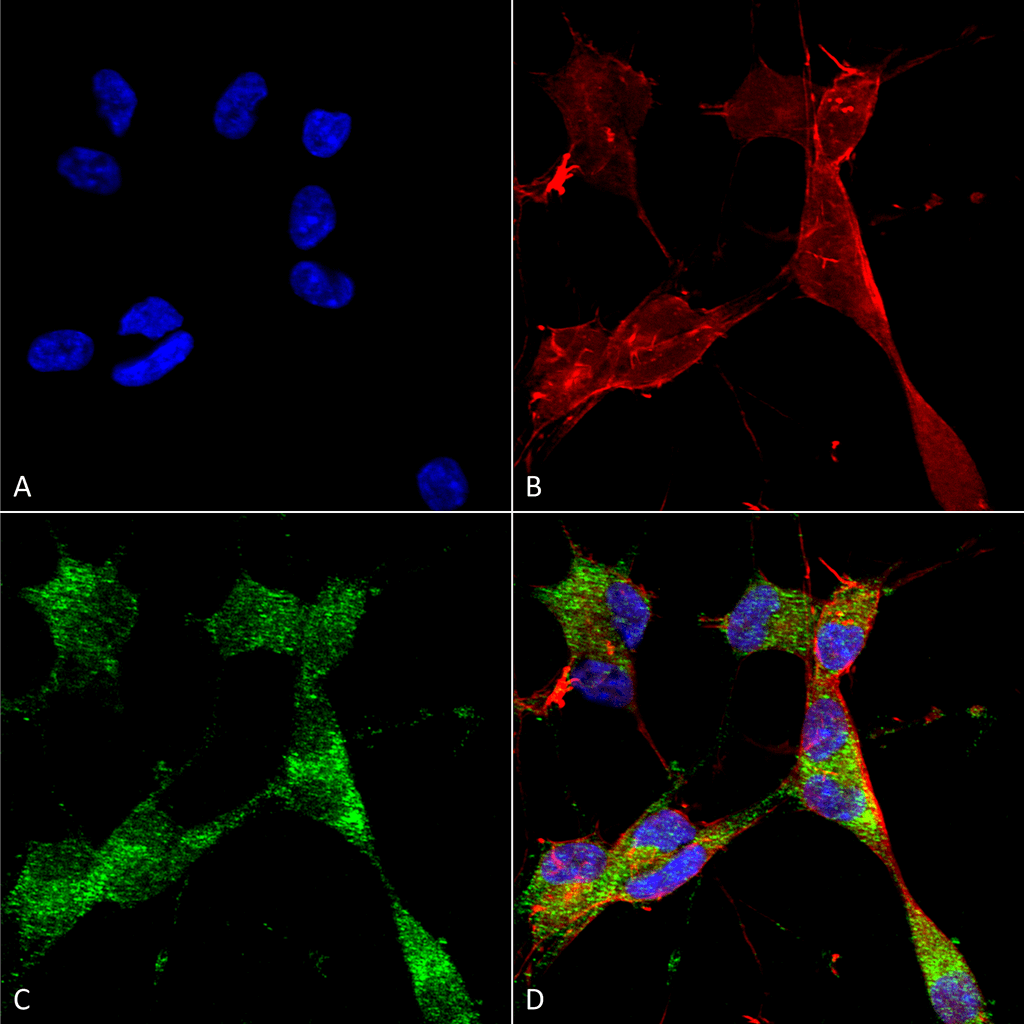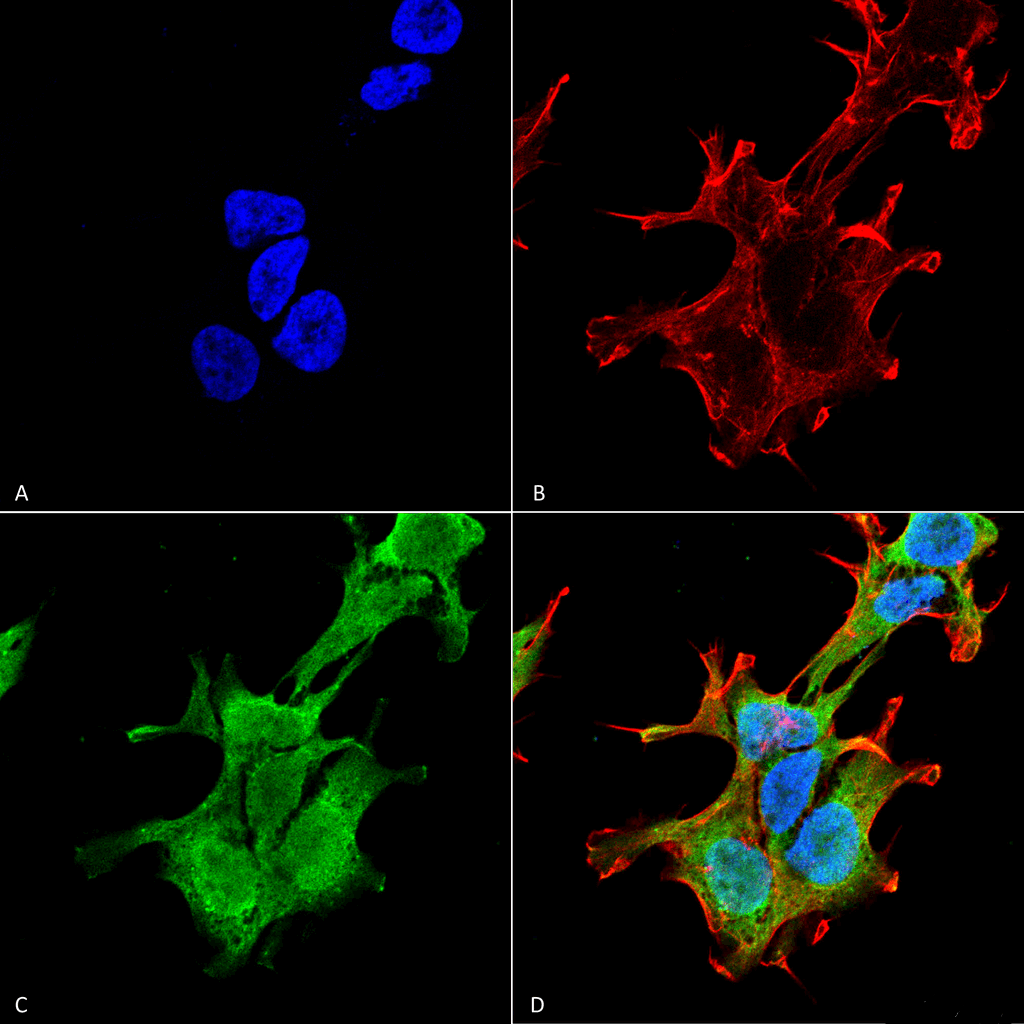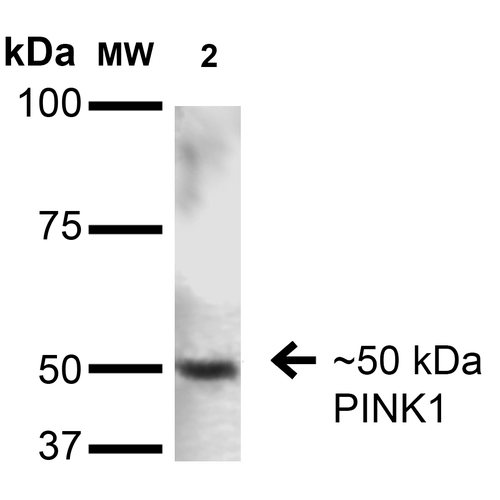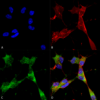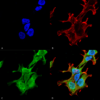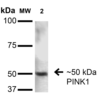Anti-PINK1 Antibody (56548)
$466.00
| Host | Quantity | Applications | Species Reactivity | Data Sheet | |
|---|---|---|---|---|---|
| Mouse | 100ug | WB,IHC,ICC/IF | Human, Mouse, Rat |  |
SKU: 56548
Categories: Antibody Products, Neuroscience and Signal Transduction Antibodies, Products
Overview
Product Name Anti-PINK1 Antibody (56548)
Description Anti-PINK1 Mouse Monoclonal Antibody
Target PINK1
Species Reactivity Human, Mouse, Rat
Applications WB,IHC,ICC/IF
Host Mouse
Clonality Monoclonal
Clone ID S4-15
Isotype IgG1
Immunogen Fusion protein corresponding to aa 112-496 (cytoplasmic C-terminus) of human PINK1. This sequence is 82
Properties
Form Liquid
Concentration 1.0 mg/mL
Formulation PBS, pH 7.4, 0.1% sodium azide, 50% glycerol.
Buffer Formulation Phosphate Buffered Saline
Buffer pH pH 7.4
Buffer Anti-Microbial 0.1% Sodium Azide
Buffer Cryopreservative 50% Glycerol
Format Purified
Purification Purified by Protein G affinity chromatography
Specificity Information
Specificity This antibody recognizes human, mouse, and rat PINK1.
Target Name Serine/threonine-protein kinase PINK1, mitochondrial
Target ID PINK1
Uniprot ID Q9BXM7.1
Gene Name PINK1
Research Areas Neuroscience
Background PINK1 (PTEN-induced putative kinase 1) is a mitochondrial serine/threonine kinase that maintains mitochondrial function and integrity, provides protection against mitochondrial dysfunction during cellular stress, and is involved in the clearance of damaged mitochondria via selective autophagy. PINK1 is synthesized as a 63kDa protein which undergoes proteolytic processing to yield two cleaved forms, ~55kDa and ~42kDa. PINK1 may be localized to the outer mitochondrial membrane with its kinase domain facing the cytosol which would explain the observed physical interaction between PINK1 and cytosolic E3 ubiquitin ligase Parkin.
Application Images




Description Immunocytochemistry/Immunofluorescence analysis using Mouse Anti-PINK1 Monoclonal Antibody, Clone S4-15 (56548). Tissue: Neuroblastoma cells (SH-SY5Y). Species: Human. Fixation: 4% PFA for 15 min. Primary Antibody: Mouse Anti-PINK1 Monoclonal Antibody (56548) at 1:50 for overnight at 4°C with slow rocking. Secondary Antibody: AlexaFluor 488 at 1:1000 for 1 hour at RT. Counterstain: Phalloidin-iFluor 647 (red) F-Actin stain; Hoechst (blue) nuclear stain at 1:800, 1.6mM for 20 min at RT. (A) Hoechst (blue) nuclear stain. (B) Phalloidin-iFluor 647 (red) F-Actin stain. (C) PINK1 Antibody (D) Composite.

Description Immunocytochemistry/Immunofluorescence analysis using Mouse Anti-PINK1 Monoclonal Antibody, Clone S4-15 (56548). Tissue: Neuroblastoma cell line (SK-N-BE). Species: Human. Fixation: 4% Formaldehyde for 15 min at RT. Primary Antibody: Mouse Anti-PINK1 Monoclonal Antibody (56548) at 1:100 for 60 min at RT. Secondary Antibody: Goat Anti-Mouse ATTO 488 at 1:100 for 60 min at RT. Counterstain: Phalloidin Texas Red F-Actin stain; DAPI (blue) nuclear stain at 1:1000; 1:5000 for 60 min RT, 5 min RT. Localization: Cytoplasm. Magnification: 60X. (A) DAPI (blue) nuclear stain. (B) Phalloidin Texas Red F-Actin stain. (C) PINK1 Antibody. (D) Composite.

Description Western Blot analysis of Rat Brain showing detection of ~50 kDa PINK1 protein using Mouse Anti-PINK1 Monoclonal Antibody, Clone S4-15 (56548). Lane 1: Molecular Weight Ladder. Lane 2: Rat Brain. Load: 15 µg. Block: 2% BSA and 2% Skim Milk in 1X TBST. Primary Antibody: Mouse Anti-PINK1 Monoclonal Antibody (56548) at 1:200 for 16 hours at 4°C. Secondary Antibody: Goat Anti-Mouse IgG: HRP at 1:1000 for 1 hour RT. Color Development: ECL solution for 6 min in RT. Predicted/Observed Size: ~50 kDa.
Handling
Storage This product is stable for at least one (1) year at -20°C.
Dilution Instructions Dilute in PBS or medium that is identical to that used in the assay system.
Application Instructions Immunoblotting: use at 1-5ug/mL. A band of ~50kDa is detected.
Immunofluorescence: use at 10ug/mL.
These are recommended concentrations.
Enduser should determine optimal concentrations for their application.
Immunofluorescence: use at 10ug/mL.
These are recommended concentrations.
Enduser should determine optimal concentrations for their application.
References & Data Sheet
Data Sheet  Download PDF Data Sheet
Download PDF Data Sheet
 Download PDF Data Sheet
Download PDF Data Sheet

